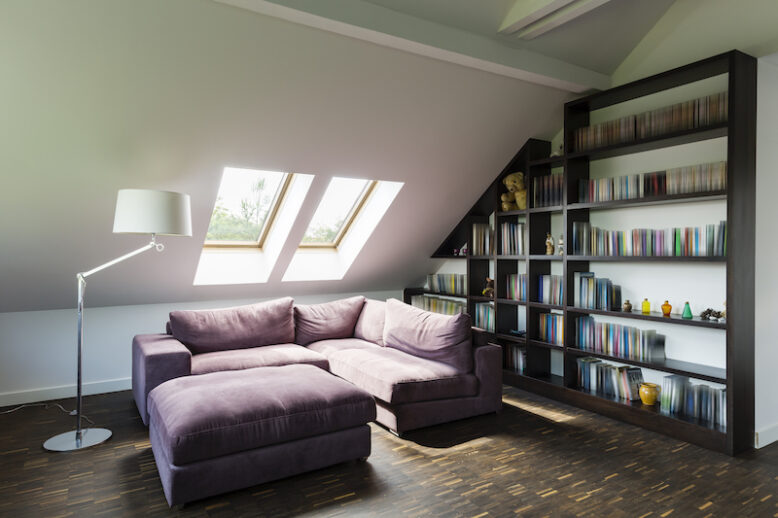The word for attic, loft, or more specifically, the space inside the roof of a house, is sottotetto (masculine, plural: sottotetti) in Italian. It is composed of two words: sotto (under) and tetto (roof).

A sottotetto is generally not naturally lit and ventilated due to a lack of windows. For this reason, it cannot be intended for residential use. If the floor can support the weight of people or things, it can be used as a storage or mechanical room. Otherwise, it only serves to protect the top floor from heat, cold and humidity.

If you transform your barren sottotetto into something habitable by adding windows, a walkable floor, insulation and connections to gas, water and electricity, it becomes a cosy mansarda (feminine, plural: mansarde).
Voglio trasformare il sottotetto di casa in un vano abitabile.
I want to turn the attic of the house into a habitable space.

And let’s not forget about soffitta and solaio, two very close synonyms of sottotetto which also translate as attic. They refer to the space directly under the roof that can be used for storage or transformed into a living space if the height allows for it.
Soffitto vs soffitta
Be careful not to confuse the two words. Whereas the feminine soffitta is a synonym of sottotetto, the masculine soffitto means ceiling.
Ho messo il lampadario in soffitta. = I’ve put the chandelier in the attic.
Ho appeso il lampadario al soffitto. = I’ve hung the chandelier from the ceiling.
But what about the word attico in Italian? Well, it denotes something far more luxurious than an attic: a penthouse! 🙂
Vorrei tanto andare a vivere in un attico, ma i prezzi sono esagerati!
I would really like to go and live in a penthouse, but the prices are excessive!
This article is also available in video format on our YouTube channel. The audio version can be found on Podbean, Google Podcast, Apple Podcast and Spotify.
Heather Broster is a graduate with honours in linguistics from the University of Western Ontario. She is an aspiring polyglot, proficient in English and Italian, as well as Japanese, Welsh, and French to varying degrees of fluency. Originally from Toronto, Heather has resided in various countries, notably Italy for a period of six years. Her primary focus lies in the fields of language acquisition, education, and bilingual instruction.


